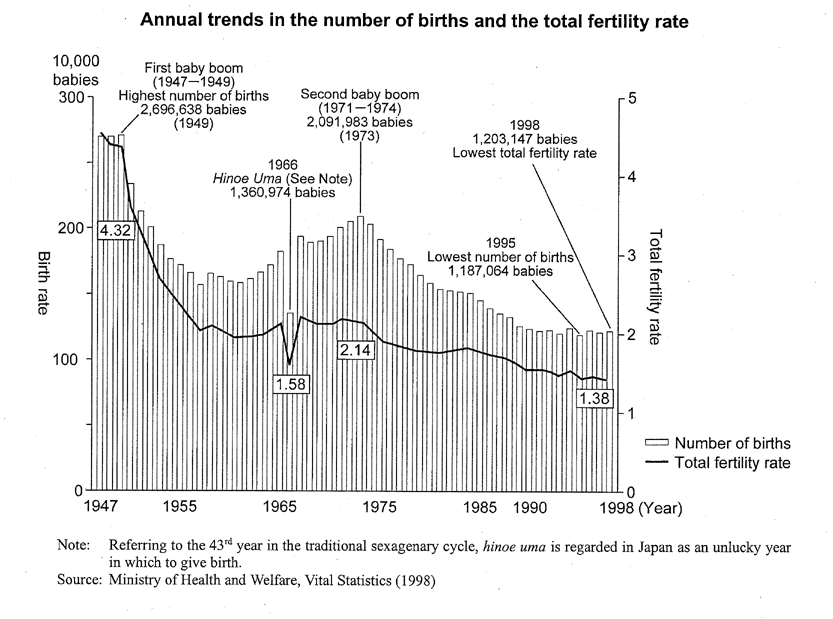| Home > Policy > White Paper, Notice, Announcement > White Paper > Japanese Government Policies in Education, Science, Sports and Culture1999 > Part2 Q62 | ||
A:At MESSC,we are implementing variousmeasures aimed at addressing dwindlingbirth rates,such as enhancing home education.
The present status of dwindling birth rates
In recent years,there has been a rapid decreasein birth rates in Japan.The number of childrenthat a woman will bear in her lifetime is calledthe total fertility rate.This began to fall sharplyfrom1950,reaching a record low of1.38in1998.This is far lower than the total fertility rateneeded to maintain the current population infuture,which is2.08( the diagram on theright ).
MESSC measures to address dwindlingbirth rates
Against this backdrop,the Government of Japan has taken various measures to address dwindling birth rates,beginning with the promotion of the Angel Plan from1994and the Cabinet Council on Promoting Measures to Address Dwindlings Birth Rates established in May1999.In order to enhanee strategy to address dwin-dling birth rates,MESSC is implementing the National Children's Plan(Emergency Three-year Strategy)for creating a structure to promote parent-child activities and provide a quality en-vironment for raising children in the local com-munity,and the other measures outlined below.
In addition,special grants to address dwindling birth rates were provided in the supplementary budget for FY1999 for daycare and education projects tackling the problem.Projects relating to education that are eligible for grants include the rapid provision of equipment at kindergar-tens,the creation of an environment tailored to providing daycare services at kindergartens,the provision of space for children(such as infant and child rooms)at educational,cultural,sports and other public facilities,and the implernenta-tion of creche services.The realization of meas-ures to address dwindling birth rates is expected in the municipalities.

| Back to Top | MEXT HOME |